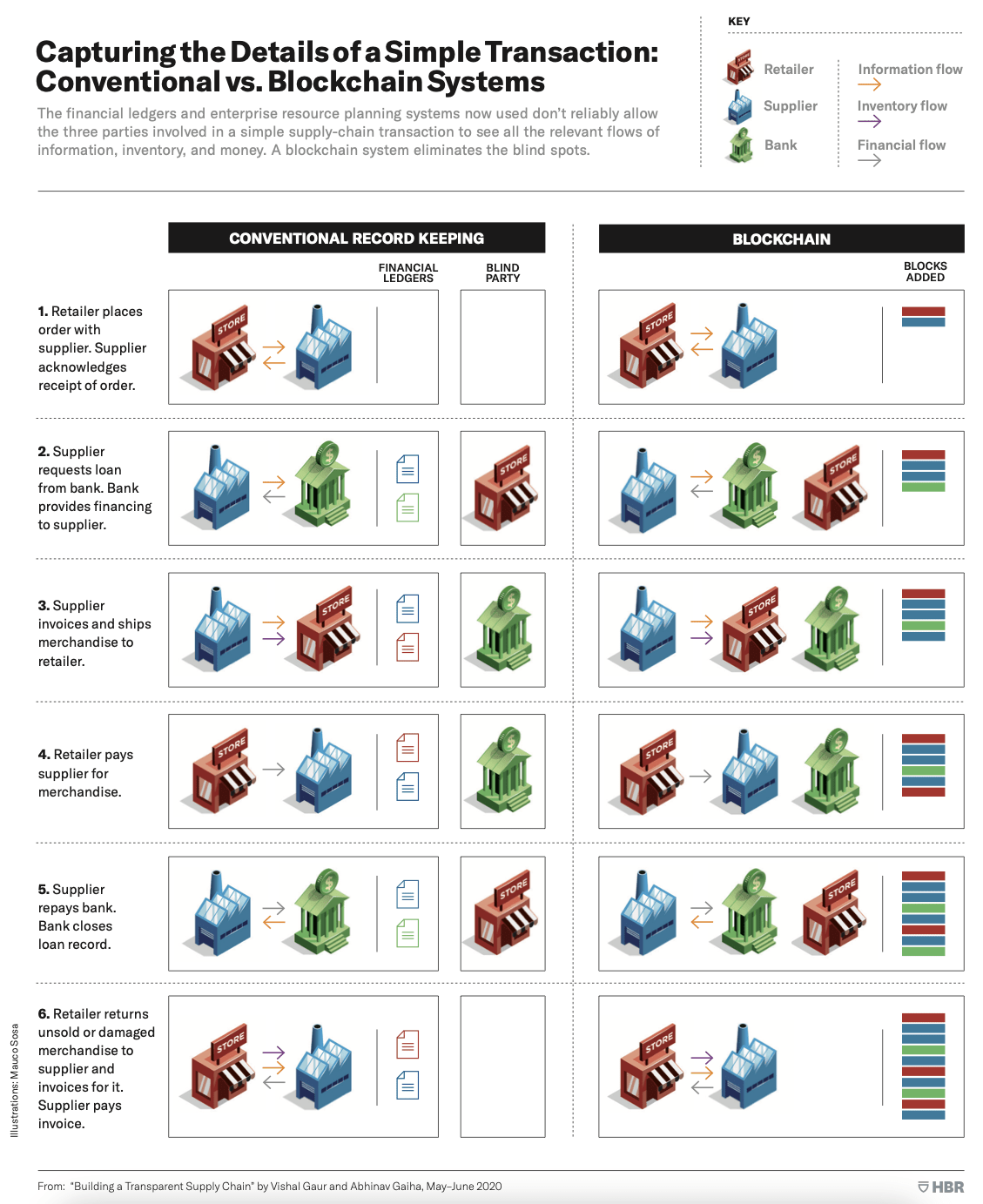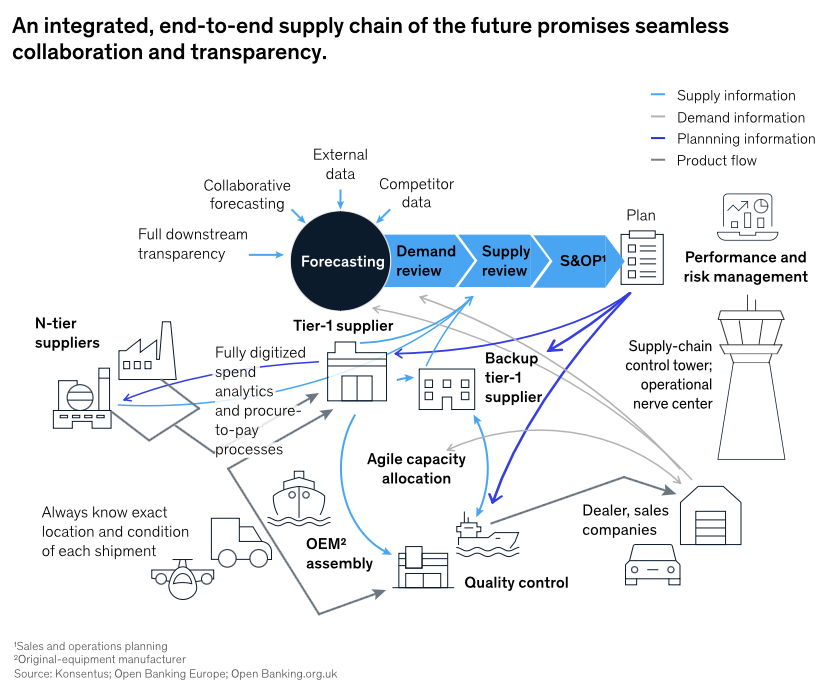What better way to understand concepts big and small than through data visualizations? In this blog series, we curate insightful visuals to provide commentary on events, academic theories and themes related to economics and transportation. Join us as we explore and engage with interesting ideas from around the world.
Business fundamentally relies on trust and contracts help formalize this when circumstances turn awry. While the traditional paper-based system has stood the test of time, it can create bottlenecks and hinder transparency by concealing information from all parties involved in a transaction. This week’s Data Vizdom zooms in on blockchain, showcasing its potential to not only build trust but also improve speed and transparency within supply chains.
The past few years have been tumultuous for businesses, as geopolitics and the pandemic have usurped decades of momentum in the proliferation of global supply chains. While the structure of these supply chains may have changed for some industries due to these pressures, global supply chains are here to stay. Resilience, reliability and flexibility remain critical challenges for suppliers, and enhanced visibility could be the key solution.

Global Supply Chain Pressure Index (GSCPI) – Federal Reserve Bank of New York (August 2024)
The end-to-end digitization of supply chains holds significant potential to deliver maximum value to both businesses and consumers. In practice, this would be an incremental process where organizations not only adopt new technologies but also standardize their systems and processes to facilitate data sharing. Blockchain has a crucial role to play by enabling transaction verification.
But what exactly is blockchain? In essence, it is an internet-based encrypted ledger that allows users to publicly validate, record and distribute transactions in an immutable form. The technology is scalable, providing a platform to create and distribute the ledger to millions of computers across the network around the world. Each transaction creates a block that is validated and immutable, latching on to the previous one in chronological order to form a chain. Both the transaction and the ledger are encrypted to ensure security.

Blockchain technology for supply chains—A must or a maybe? – McKinsey & Company (September 12, 2017)
For supply chain applications, the ledger can be made open only to authorized parties to maintain the integrity of their business operations. The following HBR visual illustrates the advantages offered by blockchain compared to traditional financial ledger entries and ERP systems, which often create blindspots, preventing parties from seeing all relevant flows of information, inventory and money. Blockchain’s chronological storage of transactions allows users to easily track activities within the supply chain, making it particularly useful for complex use cases.

Building a Transparent Supply Chain – Harvard Business Review (May-June 2020)
Amazon’s use of blockchain promises to offer end-to-end visibility across the production process for manufacturers, suppliers, logistics companies and retailers as they coordinate to deliver products to consumers. They have partnered with companies like Nestlé to deploy Amazon Managed Blockchain, tracking supply chains for 15 key commodities and enabling consumers to follow their products from farm to table.

Blockchain for Supply Chain: Track and Trace – AWS (n.d.)
While many companies have started experimenting with blockchain and a few have deployed the technology on a limited scale, McKinsey has modelled a system that demonstrates what an integrated data stream from supply chain participants and external sources on a single platform could look like. They believe such an initiative could be used to exchange demand forecasts. jointly optimize production and logistics schedules, and track operations and asset information in real-time.

Overcoming barriers to multitier supplier collaboration – McKinsey & Company (July 7, 2021)
In conclusion, blockchain holds significant promise for transforming supply chains, but its widespread adoption will require extensive experimentation and collaboration. While it clearly offers value across various use cases, overcoming implementation barriers and achieving widespread success will take time and concerted effort.
Help us make this series even better! We would love to hear your thoughts and suggestions on content makers we should follow to discover noteworthy projects and visualizations. Write to Bilal Siddika on LinkedIn or via email.
